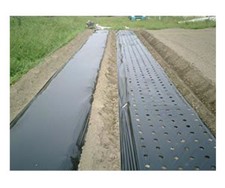What is PaaS? Platform as a Service Definition, Benefits, Platforms & Providers
- pragati
- May 6, 2021
- Software development
- 0 Comments
Content
PaaS is an extension of the SaaS model, which allows for the use of applications hosted remotely. Although many can help develop, others are better suited to helping existing applications perform better. Compare the language capabilities with your development team’s specialties. As a primary concern, the language utilized by the platform should align with your team’s skillset. It’s also important to select a platform that utilizes a commonly-used language, so it’s easier to find people who can work on it even if your team changes.

PaaS also allows for scalability and easy migration because it exists in a cloud. PaaS, or Platform-as-a-Service, provides a complete, flexible, and cost-effective cloud platform for developing, running, and managing applications. Disadvantages of various PaaS providers as cited by their users include increased pros and cons of paas pricing at larger scales, lack of operational features, reduced control, and the difficulties of traffic routing systems. PaaS has emerged as a cost-effective and capable cloud platform for developing, running and managing applications — and the PaaS market is expected to gain popularity and grow through 2027.
Our Services
The Salesforce Platform, which includes Heroku services, brings the trust and speed that are at the core of all the Salesforce products to building and deploying apps in the cloud. The platform’s built-in features and functionality take care of back-end concerns such as security, infrastructure, https://globalcloudteam.com/ and data integration so that developers can focus on building apps faster. Building and running on-premises applications is complex, expensive, and slow. Traditionally, each on-premises application requires hardware, an operating system, a database, middleware, servers, and other software.
- Today’s digital world is constantly bombarding organizations with newer technologies and data.
- Instead of the developers controlling these tasks, the PaaS providers take responsibility.
- Developers log in and do their development work in the host environment without any corresponding operational IT requirement.
- As a result, public PaaS and IaaS run together, with PaaS operating on top of a vendor’s IaaS infrastructure while using the public cloud.
- Users can easily access applications over the Internet via a web browser.
Enormous amounts of electricity also are needed to power the servers as well as the systems to keep them cool. Finally, a failover site is needed to mirror the data center so information can be replicated in case of a disaster. While leveraging PaaS, cloud usage and storage regulations should be addressed simultaneously. Once you align PaaS with your business goals, you will need to chalk out a plan about the process. Organizations should analyze whether all applications need to be migrated to the cloud or whether they can be reworked instead. They also need to have an idea about how PaaS adoption or implementation by workload migration will impact other operations and, if the impact is huge, how they can minimize disruption.
What are the Types of PaaS?
You can use it to centralise your data, and get a simplified overview. Log in to order, manage your products and services, and track your orders. PaaS vendors frequently provide online communities where the developer can get the ideas to share experiences and seek advice from others. Overall, PaaS is a good choice for delivering highly customized, modern apps that drive business innovation or customer engagement.
The inability to make changes to the environment or get feature requests deployed by the service provider can lead to companies outgrowing their PaaS and building their own internal developer platform. The underlying infrastructure that applications eventually run on is fully managed by the service provider. In many cases, the customer can decide where the application is hosted and is given a choice over how performant or secure that environment is, often at an additional cost. Oracle is an industry that has high expertise in all aspects of the cloud. PaaS service is one of the leading products among those offered by the company. The platform was initially designed to work with Oracle SaaS applications, but it also works with other apps.
Integration Platform as a Service
Companies licensing or subscribing to PaaS products outsource all of the hardware components and some of the software components of the technology stack. While the application and data storage/management functions are maintained in-house, all other functions are provided by a third-party vendor. PaaS products and solutions are most popular among application developers, as they can focus on the development of the application while the rest of the stack is managed.
PaaS is particularly beneficial if you need to create customized applications. Because the vendor controls and manages the SaaS service, your customers now depend on vendors to maintain the service’s security and performance. Planned and unplanned maintenance, cyber-attacks, or network issues may impact the performance of the SaaS app despite adequate service level agreement protections in place. PaaS in cloud computing is ideally suited for software-related product development. It is purely a development-oriented cloud computing model that cannot accommodate non-development processes, unlike other cloud solutions such as IaaS and SaaS, which serve various purposes.
SaaS Advantages
As examples, Wasabi offers cloud-based object storage as a PaaS, while open platforms such as OpenStack and Apache CloudStack enable organizations to build their own private PaaS resources. Cloud platform services, also known as Platform as a Service , provide cloud components to certain software while being used mainly for applications. PaaS delivers a framework for developers that they can build upon and use to create customized applications. All servers, storage, and networking can be managed by the enterprise or a third-party provider while the developers can maintain management of the applications. By outsourcing your services , you can access technologies and resources at a lower cost. You can also get them up and running much quicker than you would if you were investing in an on-premises infrastructure.

These developmental tools may be offered together as a framework. Depending on clients’ needs, vendors offer specific tools, but a PaaS model should essentially include everything that a developer would require to build an application. With Red Hat OpenShift, you can automate life-cycle management for increased security, tailored operational solutions, and app portability. You can also standardize developer workflows, streamline delivery, support multiple environments, and enable continuous integration alongside automated release management. Red Hat Marketplace offers automated deployment of certified software on any Red Hat OpenShift cluster.
PaaS
The investment of time and effort in such PaaS evaluations can build confidence and experience and prevent buyer’s regret later. OSes for applications to run on, as well as for the developers to build the application from, are provided by the PaaS vendor. However, some providers charge a flat monthly fee for access to the platform and its applications. Mindsight is industry recognized for delivering secure IT solutions and thought leadership that address your infrastructure and communications needs. Our engineers are expert level only – and they’re known as the most respected and valued engineering team based in Chicago, serving emerging to enterprise organizations around the globe.





